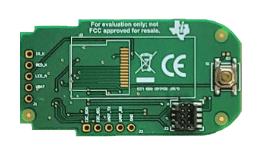This compact device offers real-time oxygen saturation and heart rate measurements, transforming patient care in hospitals, clinics, and home healthcare.

The single-chip pulse oximeter represents a groundbreaking medical monitoring and healthcare technology advancement. This remarkable device has become indispensable in various healthcare settings with its compact design and integrated functionalities. Its importance lies in its ability to provide real-time, non-invasive measurements of a person’s oxygen saturation levels and heart rate, making it an invaluable tool for medical professionals and individuals seeking to monitor their health. From hospitals and clinics to home healthcare and fitness applications, the single-chip pulse oximeter has revolutionised how we track vital signs, enabling timely interventions, enhancing patient care, and promoting overall well-being.
Texas Instruments has developed a reference design, TIDA-010267, that effectively showcases the analogue capabilities of the MSPM0L1306 within a cost-effective, single-chip pulse oximeter configuration. The MSPM0L1306 utilises its operational amplifiers as both a trans-impedance amplifier and a current control driver, boasting zero-drift and low-noise properties. Furthermore, this design incorporates an integrated high-speed analog-to-digital converter (ADC), enabling oversampling and facilitating impressive dynamic range levels. It also includes a user-friendly graphical user interface (GUI) that visually represents photoplethysmography (PPG) waveforms. It delivers vital measurements, such as heart rate in beats per minute (BPM) and peripheral oxygen saturation (%SpO2).
A broad range of achievable heart rates, ranging from 30 to 240 beats per minute (BPM) and a perfusion index (PI) range of 0.1% to 20%, is supported, accommodating diverse pulse strengths and ensuring enhanced reliability. The internal 12-bit analog-to-digital converter (ADC) achieves an impressive 90dB dynamic range through oversampling techniques. Vital sign readings are rendered precisely, featuring a standard display resolution of 1 BPM for heart rate and 1% for SpO2 levels. Thanks to its ultra-low power consumption, the device boasts an extended battery life, with a shutdown current of less than 83nA when it is off-mode. The applications encompass the utilisation of a clinical pulse oximeter within the realm of multiparameter patient monitoring. This versatile device serves many purposes in the healthcare field, primarily focusing on continuously assessing a patient’s oxygen saturation levels. Its integration into multiparameter patient monitoring systems contributes significantly to the comprehensive evaluation of a patient’s vital signs, thus enhancing the quality of care provided by healthcare professionals.
Texas Instruments has thoroughly tested this reference design, which includes a Design Guide, Bill of Materials (BOM), schematics, Gerber files, Printed Circuit Board (PCB) layout, and more. Please visit the company’s website for further information on this reference design. To explore this design in greater detail, click here.





